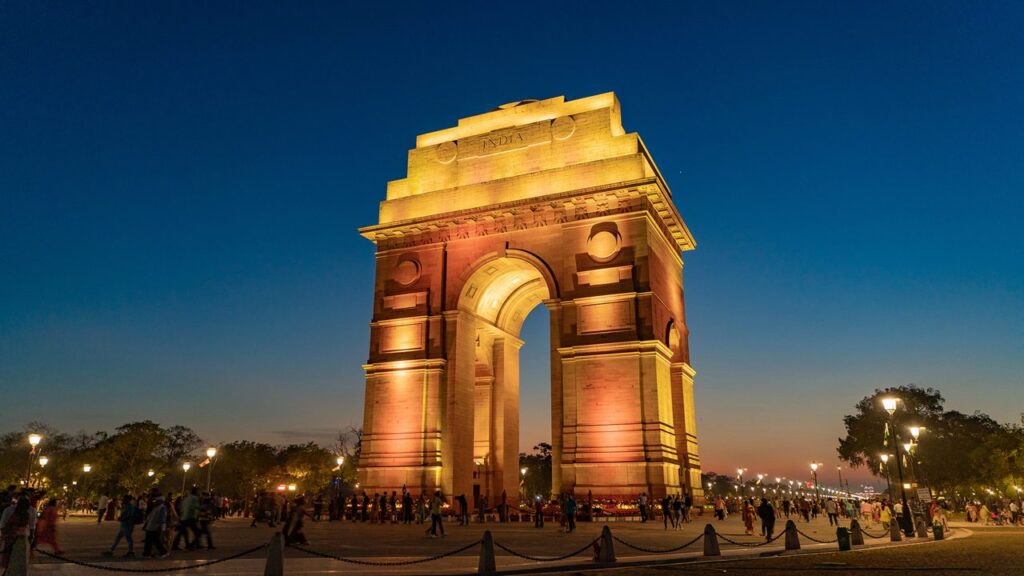In the heart of New Delhi, standing tall at 42 meters, is the majestic India Gate—a monument that is not just stone and mortar, but a living tribute to the bravery of thousands of Indian soldiers. Whether you’ve strolled around it on a breezy evening, admired its illuminated glow at night, or stood silently in front of the Amar Jawan Jyoti, India Gate has a way of stirring both pride and reflection. This iconic war memorial is more than a tourist attraction—it is the heartbeat of Delhi, a place where history, patriotism, and leisure beautifully converge.
History of India Gate
The foundation of India Gate was laid in 1921 by the Duke of Connaught and inaugurated in 1931 by Viceroy Lord Irwin.
- Purpose: Built to commemorate the 70,000 Indian soldiers who laid down their lives during World War I and the Afghan Wars.
- Designer: Architect Sir Edwin Lutyens, who also designed much of New Delhi’s layout.
- Names Engraved: The walls of India Gate carry the names of over 13,500 soldiers, an eternal reminder of their sacrifice.
Amar Jawan Jyoti – The Flame of Immortality
Beneath the archway of India Gate burns the Amar Jawan Jyoti, added after India’s 1971 war with Pakistan.
- A black marble pedestal with a reversed rifle, crowned by a soldier’s helmet.
- An eternal flame burns beside it, honoring the Unknown Soldier.
- It became the nation’s site for Republic Day parades and official tributes.
In 2022, the flame was merged with the National War Memorial, located just behind India Gate, extending the legacy of remembrance.
India Gate as a Cultural Landmark
India Gate is not only about history—it’s also a vibrant part of Delhi’s social life.
- Evening Retreat: Families, students, and travelers gather on its lawns for picnics and leisure.
- Street Food Paradise: Ice cream carts, roasted peanuts, and golgappas add flavor to the evening experience.
- Photography Hub: Its grand arch and night-time illumination make it a favorite for photographers.
Best Time to Visit India Gate
- Evenings & Night: When the monument is beautifully lit, and the lawns are buzzing with energy.
- Winter Months (October–March): Pleasant weather makes the visit enjoyable.
- Special Days: Republic Day (26th January) and Independence Day (15th August) bring patriotic grandeur, though with tighter security.
Interesting Facts about India Gate
- Originally called the All-India War Memorial.
- It resembles the Arc de Triomphe in Paris and the Gateway of India in Mumbai.
- A popular hangout spot where Delhiites enjoy late-night drives and roadside food.
Visitor Tips
- Entry is free and open 24×7.
- Wear comfortable shoes if you plan to walk around the lawns.
- Avoid carrying large bags, as security checks are common.
- Don’t miss the National War Memorial, a short walk away.
Nearest Metro & Accessibility
- Nearest Metro Station: Central Secretariat (Yellow & Violet Line).
- Easily accessible via autos, cabs, and DTC buses.
Conclusion
India Gate is more than a monument—it is a symbol of courage, unity, and the spirit of India. It reminds us of the sacrifices that shaped our nation, while also serving as a gathering spot for people across generations. Whether you’re visiting Delhi for the first time or passing by on a casual evening, the sight of India Gate glowing against the night sky is one that never fails to inspire.



